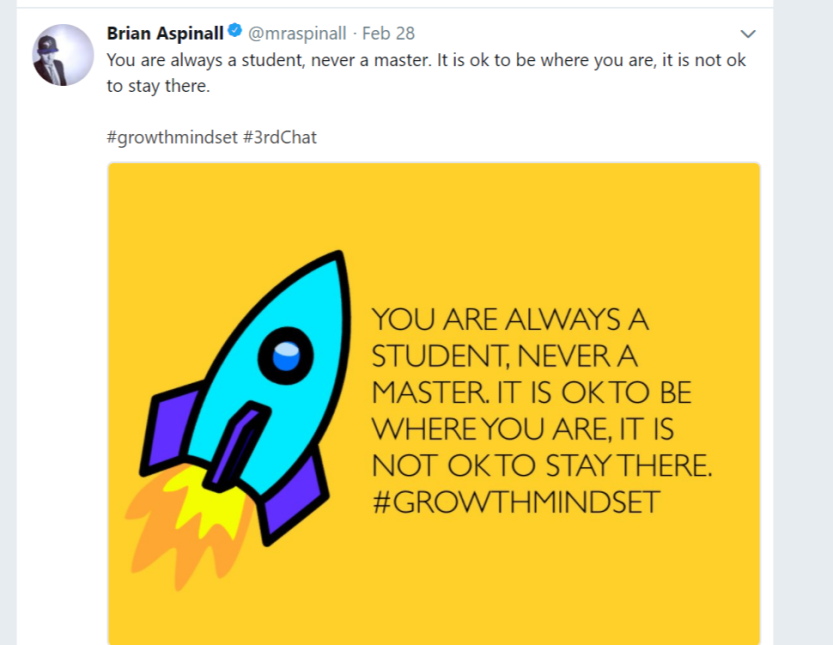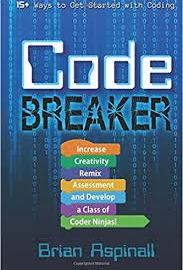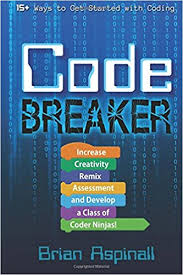
Brian Aspinall’s (@mraspinall) passion for hands-on, student centred learning and computational thinking that transcends all curriculum and grades is evident throughout Code Breaker (@codebreakerbook) and is a great resource for those starting their computational thinking journey.
Sometimes it can feel lonely when you try to implement new learning, especially coding, in your classroom, but in Code Breaker the author not only outlines his journey into computational thinking as a classroom teacher, but he also includes the voices of other educators who have had different coding experiences within their classrooms. You are not alone in starting your and your students’ coding journey.
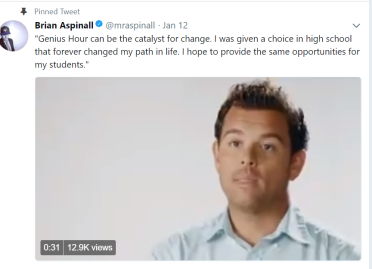
Although Brian is a strong advocate for technology embedded learning and coding in the classroom, he is a much stronger advocate for students and their abilities to be creative, critically empowered learners. Brian’s passion is a result of his own empowered learning opportunities as a high school student. He teaches with the same faith that his teacher had in him because he knows what it is like to be empowered as a learner and how coding changed the way he thinks and communicates.
Code Breaker is an honest account of Brian’s classroom coding experiences. He admits to his missteps, but like any good educator he uses these experiences to improve his teaching experiences for his students. When given the opportunity to explore coding to support and demonstrate their learning, Brian’s students were highly engaged and empowered and in the end, taught Brian as much as he taught them. The educators in the book who share their coding stories range across all grades, including kindergarten teachers which reminds us that all students have the potential to learn to code. Coding provides all learners with multiple entry points (low floors) that build upon developing skills (high ceiling) and is structured in such a way as to appeal to individual student interests (wide walls).
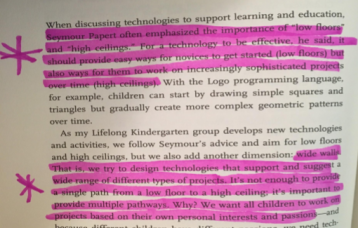
(Mitchel Resnick (@mres), Lifelong Kindergarten, 64)
Brian and the other educators in the book embrace co-learning with their students and all express a willingness to take the leap and to jump into coding alongside their students. All acknowledge that the possibilities for their students to be creative, critical learners far outweighed any nervousness or trepidation that they had about not being “coders” or the expert in the room.
After reading Code Breaker, you will be inspired to integrate computational thinking into your classroom practice and the activities provided throughout the book will get you started on you and your students’ coding journey. Like any authentic learning, the learning and the direction you undertake in learning to code with your learners will be personal. That’s what computational thinking affords learners…the freedom to collaborate, to think critically, to be innovative, to be creative, but most importantly it allows the student to personalize the learning. As Aspinall states, there is no right way to do start, just as long as we start.
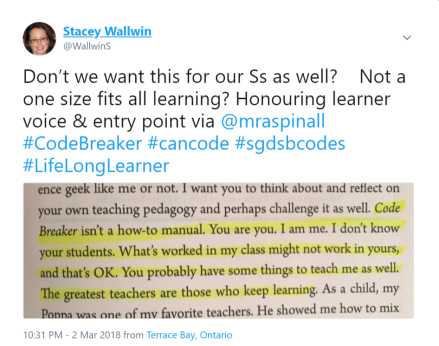
Computational thinking opportunities not only provide students with powerful learning but enhance the personal learning and relationships in the classroom. Learners can use coding to solve problems and have a meaningful impact on their lives and the lives of others.
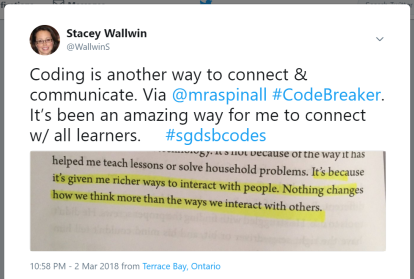
If you are looking to get started with coding in your classroom, Code Breaker is a resource that will not only provide the “why”, but the “how”. Your next? Just get started!
